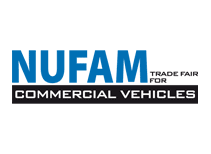CO2 regulation: Transport companies are called upon to act
Since July, binding CO2 fleet limits for heavy commercial vehicles have been in force in the EU for the first time. However, implementation poses major economic and structural challenges for manufacturers, freight forwarders and logistics companies.
According to EU regulations, manufacturers had to reduce the CO2 emissions of their newly registered truck fleets by 15 percent compared to the reference year 2019. And that's not all: by 2030, the reduction target will rise to 30 percent, by 2035 to 65 percent, and by 2040 to as much as 90 percent. Those who fail to comply with these requirements will face heavy fines.
The regulation applies to vehicles over 16 tonnes and aims to gradually decarbonise road freight transport. The future will show to what extent this year's targets have been met. The first comprehensive assessment of actual compliance will not take place until the 2027 review.
Pressure on manufacturers and operators
In any case, the new limits are very ambitious and require massive investments in emission-free drive technologies such as battery and hydrogen drives. Manufacturers are therefore under pressure to electrify their model ranges, while operators are faced with high acquisition costs and inadequate infrastructure. Small and medium-sized enterprises (SMEs) in particular find this economically overwhelming.
A key obstacle remains the inadequate charging and refuelling infrastructure for alternative drives. This topic will also be discussed again at NUFAM as part of the charging infrastructure expert forum. Although the expansion of the ‘Germany network’ is progressing, many regions are still not adequately supplied. In many places, the necessary network capacity for high-performance charging points at logistics hubs is also lacking. Without coordinated interaction between vehicle development, network expansion and political support, the transformation is in danger of slowing down.
Associations have clear demands
Associations such as the Federal Association of Freight Forwarding and Logistics (DSLV) are calling for closer integration of CO2 targets with infrastructure development and economic support. In addition to direct purchase premiums for emission-free trucks, investment aid for operational charging infrastructure and grid connections is also needed. Technology-neutral solutions should also continue to be considered in order to enable fair competition. However, the goal of significantly reducing CO2 emissions is not fundamentally questioned.
The Federal Association of Road Haulage, Logistics and Waste Disposal (BGL) takes a similar view. It regularly emphasises that the logistics industry wants to make its contribution to climate protection, but at the same time calls for realistic targets and reliable framework conditions. The BGL also often advocates technology-neutral solutions, including electric drives, hydrogen and CO₂-neutral fuels (eFuels). Clear expansion paths, government support programmes and infrastructure investments are important in this context.
What BGL boss Dirk Engelhardt had to say on this and other topics in the NUFAM podcast can be heard HERE.
Danger of excessive demands
However, the BGL warns of the danger that small and medium-sized transport companies (SMEs) could be overwhelmed and driven into insolvency. They often lack the economic prospects and resources to renew their fleets. In addition, the charging infrastructure is lagging behind political demands.
What happens next? CO2 regulation is undoubtedly a necessary step towards decarbonising the transport sector. However, the transition can only succeed through close cooperation between industry, politics and energy suppliers. For many companies, now is the time to strategically prepare for the transformation and develop sustainable solutions. NUFAM once again offers comprehensive opportunities to find out about the state of the art.

